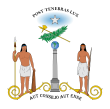| This article relies largely or entirely on a single source. Relevant discussion may be found on the talk page. Please help improve this article by introducing citations to additional sources. Find sources: "Old Fatherland" – news · newspapers · books · scholar · JSTOR (March 2022) |
| Kingdom of Chile Reino de ChilePatria Vieja | |||||||||
|---|---|---|---|---|---|---|---|---|---|
| 1810–1814 | |||||||||
 Flag
Flag
 Emblem
Emblem
| |||||||||
| Motto: Post tenebras lux (Latin) "Light After Darkness" | |||||||||
 Territories of the Captaincy General of Chile Territories of the Captaincy General of Chile | |||||||||
| Capital | Santiago de Chile | ||||||||
| Government | Provisional government | ||||||||
| King | |||||||||
| • 1810-1814 | Ferdinand VII (de jure) | ||||||||
| President | |||||||||
| • 1810-1811 | Mateo de Toro y Zambrano | ||||||||
| • 1811-1813 | José Miguel Carrera | ||||||||
| • 1813-1814 | José Miguel Infante | ||||||||
| Legislature | National Congress | ||||||||
| Historical era | Decolonization of the Americas | ||||||||
| • Established | 18 September 1810 | ||||||||
| • First National Congress | 4 July 1811 | ||||||||
| • Coup d'état | 4 September 1811 | ||||||||
| • Provisional Constitution | 3 May 1814 | ||||||||
| • Disestablished | 2 October 1814 | ||||||||
| Population | |||||||||
| • Estimate | 823,685 (1813 Census) | ||||||||
| |||||||||
| Today part of | Chile | ||||||||
Old Fatherland (Spanish: [ˈpatɾja ˈβjexa], lit. 'Patria Vieja') refers to a time period in the History of Chile occurring between the First Junta of the Government (September 18, 1810) and the Disaster of Rancagua (October 1, 1814). In this period, Chilean measures were taken for the imprisonment of Fernando VII of Spain by Napoleon and this started the governmental organization of the Kingdom of Chile, which swore fidelity to Ferdinand VII.
This period was characterized by the transformation from a movement of temporary autonomy to one of total independence. Two things that stood out during this period were the political prominence of the Carrera brothers, especially José Miguel Carrera and the military campaigns led by Bernardo O'Higgins as General. (Battle of Membrillar, Battle of Yerbas Buenas, and Battle of El Roble).

During this time a Government Junta of Chile as well as a National Congress were organized to administer the country during the imprisonment of the king. The Congress passed a law decreeing Liberty of the Womb, which stated that all children of slaves born on Chilean soil from that point onwards would be free. In 1812, the first constitutional decree was passed, which agreed to recognize the king if he accepted certain constitutional regulations.
| Part of a series on the |
|---|
| History of Chile |
 |
| Timeline • Years in Chile |
| Early history |
| Colonial times |
| Nation-building |
| Republican period |
Parliamentary period
|
| Presidential period |
| Military dictatorship |
| Contemporary |
| Related topics |
This article about the history of Chile is a stub. You can help Misplaced Pages by expanding it. |
References
- Rivera, Sergio (1983). A Short History of Chile. Editorial Universitaria. pp. 81–83. ISBN 9789561117617. Retrieved 28 March 2022.